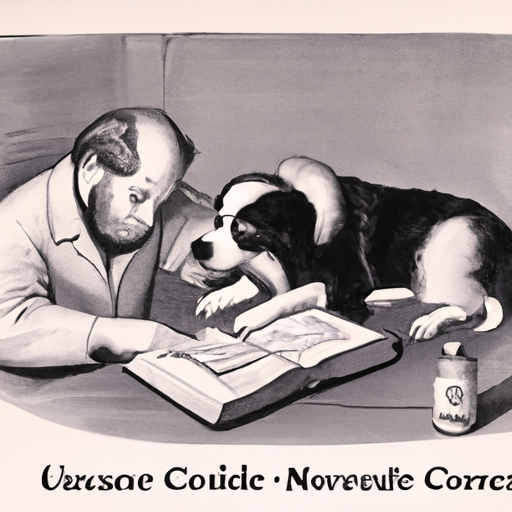If you’re a dog owner, you know that our canine companions are more than just pets – they’re part of the family. So when your furry friend is under the weather, it can be deeply concerning. One common health issue in dogs is conjunctivitis, also known as pink eye. This infection or inflammation of the eye can be uncomfortable or even painful for your dog, but thankfully, it’s often treatable at home with the right care and attention.
Key Takeaways
- Conjunctivitis in dogs can be caused by a variety of factors, including allergies, irritants, or bacteria.
- Symptoms include redness, swelling, and discharge from the eye.
- Treatment often involves cleaning the eye, applying topical medication, and addressing underlying causes.
- Consult your vet if symptoms persist or worsen.
Table of Contents
- Understanding Conjunctivitis in Dogs
- Recognizing the Signs and Symptoms
- Steps to Treat Conjunctivitis at Home
- When to Consult a Veterinarian
- Preventing Future Eye Infections
- Frequently Asked Questions
Understanding Conjunctivitis in Dogs
Conjunctivitis is a condition that affects the conjunctiva, the thin membrane that lines the inside of a dog’s eyelids and covers the whites of their eyes. When this tissue becomes inflamed, it can cause discomfort and a range of noticeable symptoms. This condition can arise from numerous causes such as allergens, foreign bodies like dust or hair, bacteria, viral infections, or underlying health conditions such as dry eye.
Recognizing the Signs and Symptoms
Knowing what to look for can help you catch conjunctivitis early, before it becomes more serious. Common signs of conjunctivitis in dogs include:
- Redness in the eye
- Excessive blinking or squinting
- Discharge from the eye, which may be clear, yellow, green, or even a bit bloody
- Swelling of the eye or surrounding tissue
- Pawing at the eye
If you notice any of these symptoms in your dog, it may be time to take action. You can find more about recognizing eye problems in dogs here.
Steps to Treat Conjunctivitis at Home
With a mild case of conjunctivitis, taking some simple steps at home can often help your dog feel better. Here’s what to do:
-
Clean the Eye: Use a clean, damp cloth to gently wipe away any discharge. Be sure to wash the cloth between uses to prevent spreading the infection.
-
Apply a Warm Compress: A warm compress can help soothe your dog’s eye and reduce inflammation. Soak a clean cloth in warm (not hot) water, wring it out, and apply it to your dog’s eye for a few minutes.
-
Use a Topical Eye Medication: Over-the-counter eye drops or ointments designed for dogs can help treat conjunctivitis. Follow the instructions on the package carefully.
-
Address Underlying Causes: If allergies are causing your dog’s conjunctivitis, consider what changes you can make to reduce their exposure to allergens. This could include frequent dusting and vacuuming, using hypoallergenic dog beds and toys, or even changing your dog’s diet. You can find more about dog allergies here.
Remember, these steps are for mild cases only. If your dog’s symptoms persist or worsen, it’s time to consult a veterinarian.
When to Consult a Veterinarian
If your dog’s conjunctivitis doesn’t improve with home treatment, or if it’s accompanied by other concerning symptoms (like loss of appetite or lethargy), it’s time to seek professional help. A veterinarian can diagnose the exact cause of your dog’s eye problem and prescribe stronger medication, such as antibiotics, if needed. They can also check for more serious eye conditions, like glaucoma or corneal ulcers. For more information on when to seek vet care for your dog, visit here.
Preventing Future Eye Infections
Prevention is always better than cure. To help prevent future eye infections:
- Keep your dog’s living area clean and free of dust and other irritants.
- Groom your dog regularly, taking care to gently clean around their eyes.
- Protect your dog’s eyes from wind, sun, and foreign objects by using dog-friendly eye wear during outdoor activities.
- Maintain regular vet check-ups to catch potential issues early.
Frequently Asked Questions
1. Can conjunctivitis in dogs spread to humans or other pets?
Yes, certain types of conjunctivitis can be contagious. It’s important to wash your hands after treating your dog’s eye and to prevent them from coming into close contact with other pets until they’re fully recovered.
2. How long does conjunctivitis last in dogs?
With proper treatment, most cases of conjunctivitis clear up within a week or two. However, some cases may persist longer, especially if there’s an underlying cause that isn’t addressed.
3. Can I use human eye drops to treat my dog’s conjunctivitis?
It’s not recommended to use human medication on your pets without consulting a vet. Some ingredients in human eye drops may not be safe for dogs.
By understanding the signs and symptoms of conjunctivitis, knowing how to provide at-home treatment, and when to seek professional help, you can ensure your furry friend stays healthy and happy. Remember, the love and care you provide your dog today can lead to a healthier, happier pet tomorrow.



